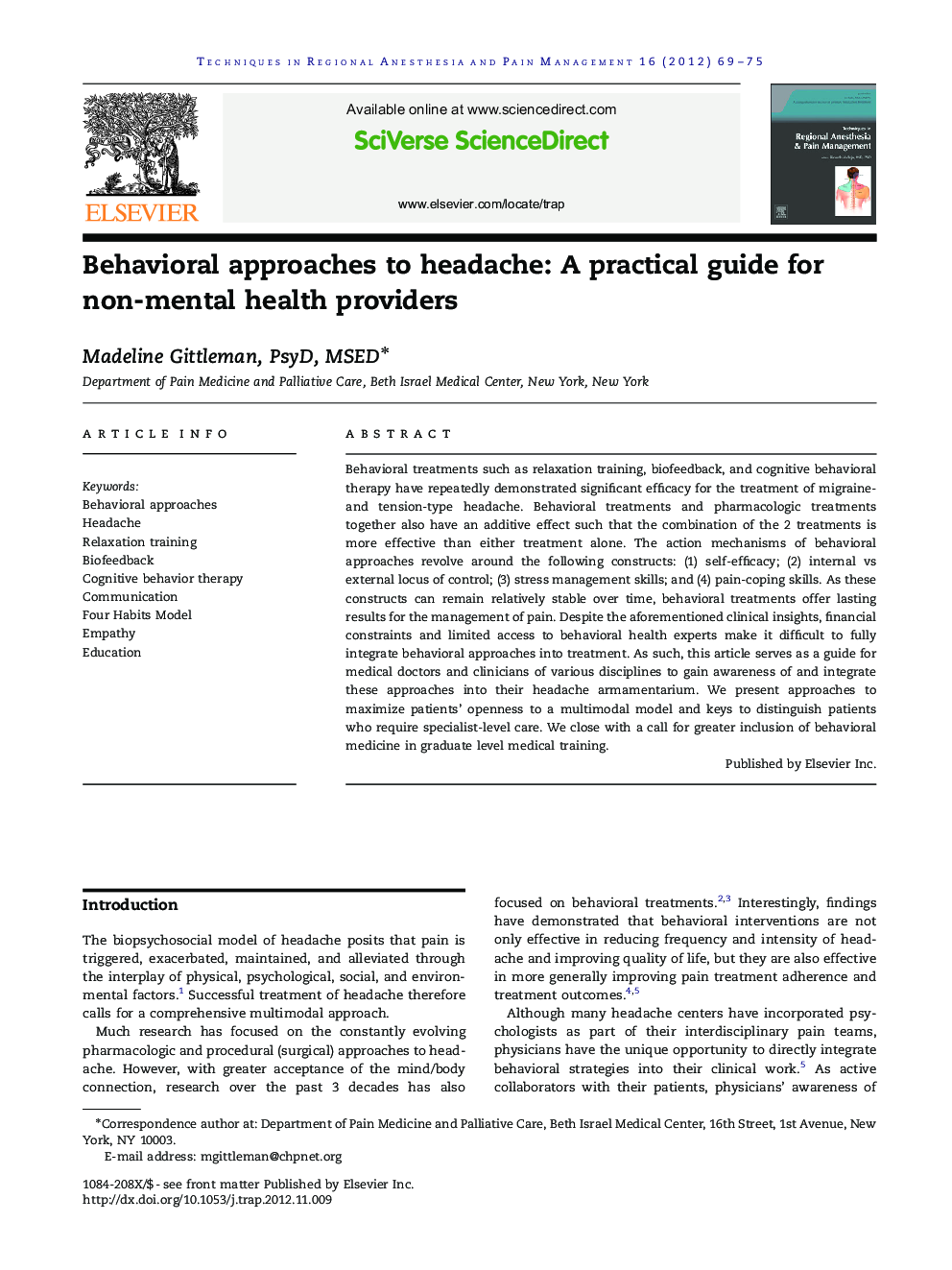| Article ID | Journal | Published Year | Pages | File Type |
|---|---|---|---|---|
| 2772128 | Techniques in Regional Anesthesia and Pain Management | 2012 | 7 Pages |
Behavioral treatments such as relaxation training, biofeedback, and cognitive behavioral therapy have repeatedly demonstrated significant efficacy for the treatment of migraine- and tension-type headache. Behavioral treatments and pharmacologic treatments together also have an additive effect such that the combination of the 2 treatments is more effective than either treatment alone. The action mechanisms of behavioral approaches revolve around the following constructs: (1) self-efficacy; (2) internal vs external locus of control; (3) stress management skills; and (4) pain-coping skills. As these constructs can remain relatively stable over time, behavioral treatments offer lasting results for the management of pain. Despite the aforementioned clinical insights, financial constraints and limited access to behavioral health experts make it difficult to fully integrate behavioral approaches into treatment. As such, this article serves as a guide for medical doctors and clinicians of various disciplines to gain awareness of and integrate these approaches into their headache armamentarium. We present approaches to maximize patients' openness to a multimodal model and keys to distinguish patients who require specialist-level care. We close with a call for greater inclusion of behavioral medicine in graduate level medical training.
